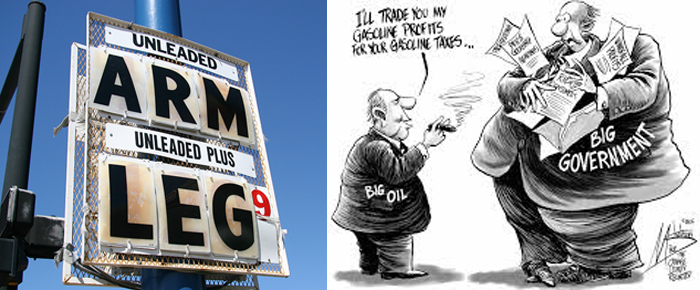
By Haddon Libby
Have you noticed that the price of a gallon of gasoline has been going up recently? With the United States producing more oil and gas than ever, one would think that gasoline prices should be coming down. Why the expensive disconnect? Also, why are gas prices in California higher than the rest of the country. Surely having more drivers using more gas should mean that our prices should be lower, right?
To understand the root causes of California’s higher prices starts with an understanding of gasoline blends. Not all states have the same gas blends. For example, California has strict air quality guidelines. This is not just because California is more environmentally aware – the state’s population density and temperatures have a lot to do with it. As such, California requires boutique gas that is different from the rest of the country. Additionally, like most states, California requires different gas blends in the winter than in the summer. As engines vaporize and boil gas in order to operate, If the vaporization point is too low, gas does not burn well in your car’s engine. If the vaporization point is too high, the burning of gas will cause poor air quality and more ground-level ozone or smog. These different fuel blends are meant to address this delicate balancing act. Summer fuel has a lower boiling point which reduces air pollution but is more expensive to produce.
Fuel standards in California are much higher than the rest of the country due to the sheer number of cars on the road as well as the higher summer temperatures and a more environmentally conscious population. This means that there are few refineries making the gas that we all use. Additionally, federal laws limit the shipping of gasoline domestically such that it is more expensive to sell gas between states than it is to simply sell the gasoline to other countries.
As the refining business operates on a low profit margin, plants that make gasoline must operate at close to capacity in order to make a profit. When one refinery in the state is closed for maintenance or due to a mishap such as a fire, the supply of gas is severely inhibited causing gas prices to go up.
In February, refineries began reducing gas production as they began their seasonal maintenance routines in advance of a retooling of their production lines for summer gas. When you combine these factors with a nearly 10% increase in oil prices, prices at the pump went up.
As refineries cannot sell winter gas beyond Memorial Day, there is a tightening of winter gas supplies as we approach the end of May as no one wants to sit on excess supply that cannot be sold until winter fuel standards go back into effect.
So what is the solution? Relaxing California’s boutique gas rules so that we can use gasoline blends made in neighboring states is an obvious but unlikely solution. Building more refineries is another answer but due to the high costs associated with building a facility, low profit margins and heavy regulatory burden in the state, companies and investors are reticent to making costly investments in a state where returns are weaker than the rest of the country. As such, increased capacity is unlikely in the near term.
Conversion to alternative fuels like compressed natural gas (CNG) and electric vehicles is a distinct possibility although long driving distances impede the advance of these options as there are few refill stations for CNG not to mention the long recharge times on electric vehicles.
In the end, the price of gasoline would be lower if both federal and state lawmakers simplified things. The complexity keeps prices higher while at the same time depressing business activity which inhibits job growth.








































